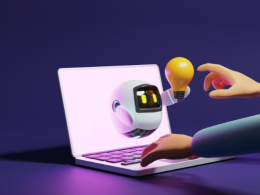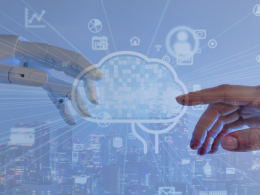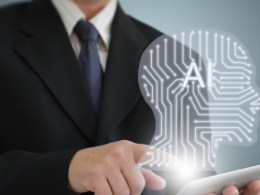Hello World!
This is how it all began; IT rose as a discipline from simple HTML programs to Artificial Intelligence today. However, with time several terms have come to fore which not only sound similar but also have overlapping functional areas or work in sync with each other.
Today, we will discuss Data Science, Machine Learning, Deep Learning and Artificial Intelligence in relation to each other and in contrast with respect to each other.
A Comparative Chart To Help You Out
| Feature | Artificial Intelligence | Machine Learning | Deep Learning | Data Science |
| Core Area | Developing machines which are intelligent i.e. able to make decisions which would require human intervention otherwise. | Developing frameworks which help a system learn and make accurate decisions depending on the job the system is expected to perform. | Developing ANNs and CNNs to develop machines which learn accurately and without or with as little as possible human intervention. | Processing data and visualizing results to help makes better decisions in real life situations. Makes use of deep learning and machine learning. |
| Nature | The Parents discipline, emerged as a sub-discipline of computer science. Umbrella discipline for everything that has to do anything with realizing the vision of intelligent systems and sentient systems. | Sub-discipline of Artificial Intelligence. Deals with the question ‘How to make a machine learn’. | Sub-discipline of Machine Learning. Deals with developing and improving self-learning architectures, specifically for intelligent systems. | Uses components from deep learning, machine learning and artificial intelligence, data science also makes use of big data to make better decisions. |
| Basic Problem Statement | -Which systems should be made intelligent?
-How so? -AI Ethics |
-Developing a robust and reliable framework which learns pattern and ideally learns what to learn. | Developing computing elements which learn from labeled or unlabeled data and draw inferences. | -Segmenting Data
-Processing Data -Making Accurate decisions |
| Functional Importance | All smart systems are AI-powered (umbrella discipline) | Email filtering, detection of internal information breaches, detecting frauds etc | Image classification, object classification, Precision Medicine etc | Customer Segmentation, target-oriented product development etc |
| Careers | Being an umbrella discipline, it covers everything from robotics to deep learning and so is the range of professions. | Machine Learning Engineer, Tool based positions like Machine Learning using R/Python with Theano. | Deep Learning Engineer, Tool based positions like Deep Learning using Python with Keras on top of TensorFlow. | Data Analyst, Data Scientist etc. |
A Little Backdrop
Artificial Intelligence is the core field which deals with research and study of computers which are capable of taking reasonable decisions in situations where human judgment would otherwise be needed.
Machine Learning is a subset of Artificial Intelligence. To make artificial intelligence a reality, we need systems which can learn and apply logic like the human brain does.
To help computers learn, we need a framework of storage, computing elements, systems software, and algorithms, integrated together. This is to help the program under consideration to learn patterns and produce generalizations. These generalizations are used for predicting results on unseen data. The job of machine learning is to provide the framework and software component of an intelligent machine.
Deep Learning is a subset of Machine Learning which employs Artificial Neural Networks and Convolutional Neural Networks to help the computer replicate human thinking and decision-making pattern.
Data Science is an interdisciplinary field about scientific methods, processes, and systems to extract knowledge or insights from data in various forms, either structured or unstructured. This field brings statistics, data analytics and related methods together so as to understand and analyze the actual phenomenon with the data. With the Tsunami of big data, data science has gained unparalleled interest from all quarters of the tech scene. In combination with AI, data science will shape the new world order.
In Short:
|
The New World Order?
With advances in artificial intelligence, the very structure of our world is changing. Intelligent machines are entering every sphere of life; from making our morning latte to defeating the world Go Champion, these machines are gaining a foothold.
Data is of utmost importance today. We have unparalleled streams of data, which can be processed and utilized for streamlining various operations. Understanding the story this data has to tell, is among the most desired skills of the day.
E-commerce giants like Amazon, Myntra, Flipkart etc utilize simple browsing data to recommend products to potentials buyers. Google Adsense has redefined user-oriented and customized advertisement. It uses data about a user’s browsing history and general preferences to display the ads with which the user can relate.
Machine learning which has traditionally been ‘how to do what’ oriented in approach, has seen some major developments. Now, machine learning uses advanced neural networks with high complexity, under the name of deep learning, to create a system which only needs to know ‘what to do’, figuring out the ‘how’ of the process itself.
Deep Learning is a sub-domain of Machine learning which becomes important in the current scenario where we need to employ neural networks in far too many cases. Earlier neural networks were slow and not so efficient but after significant research, today’s neural networks perform astonishing feats quite easily.
Most governments and organizations understand that in the coming times, data science and artificial intelligence are going to be the two pillars of progress, supported by the foundation of machine learning and deep learning. Investments in research and ambitious projects are at an all-time high. Most players are convinced that possessing the best AI systems will provide them with an edge over the rest. Considering the potential this idea embodies, this statement is not an exaggeration.
In Short:
|
Perspective
Now, we have a general idea of the status quo of the tech world, let’s dig a bit deeper. What are these advancements that we are talking about? What is the relationship between data sciences and AI? How do Deep learning and Machine learning affect the picture?
Before answering these questions, let’s set the stage.
As mentioned earlier, Artificial intelligence is the main domain which studies and researches intelligent systems. These systems can learn from data without a set of strict rules and can take decisions on their own in situations where one would generally require human judgment.
What is Human Judgement?
When we say human judgment, we should not confuse it with human emotions. While a sentient machine will be fully able to emulate all emotions and thinking process of a human brain, we do not need a sentient machine for every function. We need a machine which is good at what it is supposed to do, that is, efficiency is paramount. In a nutshell, An efficient and trustable intelligent machine doesn’t have to be sentient.
Where are we with replicating Human Judgement?
The current advancements in AI, seem to be following this principle. While we are developing an aesthetic AI robot like Sophia which can replicate quite a lot of human expressions and seems to have a good sense of humor; we are also working on systems that handle precision medicine by keeping an updated record of patient’s health and real-time vitals data and medical reports.
How do Deep Learning and Machine Learning help?
- What is necessary though is that this machine has enough data to learn from and that it learns the correct patterns. This is where deep learning and machine learning reconnect to the picture.
- Data acquired through the big data frameworks is organized and provided to the machine scientists and the Deep Learning Engineers.
- These engineers then model the data according to their requirement and use techniques like elastic net regularization, ridge regression, lasso etc to avoid overfitting.
- Performance metrics are used to get rid of underfitting issues.
Importance of Machine Learning and Deep Learning:
We have discussed that, to develop an AI machine, we need a framework, a system that knows how to learn. This is taken care of by the Machine learning paradigm under AI. Deep Learning is the specialized subset of Machine Learning which consists of ANNs and CNNs.
ANNs and CNNs
ANNs (Artificial Neural Networks) and CNNs (Convolutional Neural Networks) are the basic computing elements used in developing a self-learning system. These networks replicate the thinking process of the human brain. They are not quite as complex as our brain but fairly advanced. Applying these to our system, we establish a system of activation functions and weighted connections.
What do ANNs and CNNs do?
This framework learns, stores knowledge and uses this knowledge to make decisions in the long run. The framework is also capable of adjusting the importance of a parameter as it examines more data and learns better.
Examples of ANNs and CNNs
Google maps could be considered a good example of this. It employs neural networks to examine real-time data from satellites on various parameters like ETA, distance, traffic conditions, the condition of the road, amenities and features available on the way to destination etc, it decides the best route.
Now, one may argue that static or strict code could also do this job. However, we must not forget the complexity involved and the fact that unlike strict code, neural networks do not have a necessarily definite state. The identified connections’ weight can be varied as per the observations. This makes the system adaptive, and enables the map’s algorithm to find out the best route.
In Short:
|
Applications of Artificial Intelligence, Machine Learning, Deep Learning and Data Sciences
The following examples will elaborate how these distinct fields come together to give shape to our vision of the future and efficiency:
1. Marketing
Marketing could very well be the sector benefiting the most from Data Science and Artificial Intelligence. The huge amounts of data gives up lucrative segmentation criteria and enables the marketing department to target potential clients.
It’s easy to write an ML program that makes a list of these clients and another that sends customized emails to these people. An altogether different program might be customizing the message for the emails by including terms and offers that interest the considered client the most. This saves both cost overhead and time.
Since the process is not manual, the error margins also go down.
2. Language Translation
Natural Language processing is a task that multiple algorithms tried to establish by strict/sequential traditional coding. However, the meaning, accent and context of language change for the same language as we move from one part to another.
This becomes harder for languages like English, Spanish, Chinese etc as these are the most widely spoken languages in the world.
How do we solve this?
To tackle this issue, first, we need a vast dataset of audio and text samples of languages from all over the world. Then this will be fed to a neural Network which will learn from this data and when it sees unseen data, it will use the generalizations it made earlier to respond. Earlier systems provided a rudimentary translation assistance, but today, powered with deep learning, AI systems, for example, Google Translate, are quite accurate with translation.
3. Handwriting Generation and Recognition
Handwriting generation has generally been a pet project for researchers, with barely a well thought out real world application until recently. Languages have fonts, uppercase, lowercase etc.
As long as text is machine printed, it’s easier to read. However, certain characters can be written in multiple ways, which might not be easy to understand.
Why develop Handwriting Recognition?
For real-time translation, translating from images, translating signs put up on roads or business outlets can be quite hard.
The recent implementation of ML powered translation software at Google (Google Translate) presents an interesting use-case. You can simply scan any sign and it will translate the sign for you. This has been possible only due to the ability of handwriting recognition.
Again, we need a humongous amount of well-curated data to let our algorithm develop a knowledge base.
4. Self-Driven Cars
Consider this future scenario, where only self-driven vehicles are on the road, ousting any kind of human interference in driving.
These vehicles will route the shortest and safest possible path, avoiding any kind of collision or accidents on the way. This is expected because these vehicles will already know the location of vehicles in the vicinity and other hurdles as applied.
Self-driven vehicles might also be connected to a central traffic system, making the complete system work as one big meta-AI brain.
How do we realize this?
To make this a reality, we need unparalleled amounts of data about terrains, roads, weather and local conditions, traffic systems and many other factors. This data might be there in a raw form but to make this data useful, you guessed it right, we need data scientists!
Data visualization is of immense importance here, because to cut transport and logistics costs, even as of now we are employing AI.
5. Digital Assistants
Many of us know ‘Samantha’, the AI operating system with whom the protagonist of the movie ‘Her’ falls in love. Samantha might also be called an amped up Siri, the Apple iPhone digital assistant. Alexa, by Amazon, is another impressive example. You just call out to her and she lights up! People have gone as far as calling Alexa ‘the perfect woman’.
What these two systems represent, however, is an ambitious project at many firms. To have a digital assistant who would book your appointments for you, pays your bills in time, keeps your house stocked and maintained, remembers everything for you; interesting?
Now, to make this a reality, we need to implement Natural Language Processing abilities in this assistant, provide it with the ability to connect to all other AI or non-AI system as the need may be, provide her with a knowledge base rivaling that of a human and what-not. To implement this, we need specific data and information about the specific client and an ability to adapt in real-time. We won’t only need a data scientist here but also an expert Deep Learning programmer.
6. IoT, AI and Data Sciences
We are picturing a future where every ‘thing’ is on the internet.
That is, you control or access anything that can be made digital from a teeny-tiny computer: your laptop, your phone, even your smartwatch. We definitely need good networks for this but what is even more important is that these objects understand the presence of other objects so as to give you a seamless experience.
We would need a complex combination of all the technologies we have at hand and maybe an ounce more.
What we are trying to establish here is the fact that, in their own domain Artificial Intelligence, Machine Learning, Deep Learning and Data Sciences are different concepts. But in real life, they work hand in hand. Their differences are more like the difference between your job and your HR manager’s but essentially, you are working for the same organization (human society in case of computers).
Challenges
The amount of data we are handling is colossal. We don’t even utilize this data to its true potential. One can guess the value of data by one simple fact that most services from Google are free and it is still a multi-billion company.
However, data science has its own vices.
With the current amount of surveillance and data extraction from otherwise personal sources like one’s personal search history or browsing history, your map entries and routes recently taken; might seem like a convenience when using the specific application. But when this data might get shared at unexpected platforms, not only marketing companies but other nefarious outlets may also have access to it.
Terrorist organizations and radical elements have been using multimedia and social media for a long time to mobilize supporters, this could go up by quite a notch if data was to become as vulnerable and easily accessible as feared.
Also, ethical questions like, who decides how much surveillance is enough surveillance, who gets to control this data that has been procured and who gets to decide how this data is shared and on what basis? Many rules and regulations have been put in place by governments all over the globe but the mercurial nature of data, makes it hard to control. With a tool as powerful as data sciences, we are putting a lot at stake by simply putting it online.
As of now, we have systems that can be classified as Narrow AI more often than as real AI. By narrow AI, we mean systems which are trained using supervised neural networks. These systems have been given some parameters to begin with and are adjusted every now and then.
By Real AI we mean systems which learn on their own, systems which adapt accordingly and maintain a high accuracy along the way.
Now, the Real AI is highly desirable and our scientists are working towards it day and night. Come to think of it, we don’t know how far the learning-itself AI can go. We can put basic rules in the system like the ones suggested by Isaac Asimov but how do we guarantee that the system will not learn to violate these rules and always abide by?
In the name of real AI, all we have is AlphaGo, IBM Watson and a few others. Knowing the full extent of the advantages or for that matter, disadvantages the real AI of future might have, is not quite possible until we start researching it and scaling it today itself. We will think slower than these machines of future, what we have before these machines enter existence is the head start we need ever so direly.
Moreover, if an AI system is biased, by its manufacturer or through learning from a biased dataset, how do we handle the after-effects?
Machine ethics have been a question of interest for quite some time now and shed light on real concerns. While many dismiss these fears as the ‘alarmist view’, we can’t completely rule it out when Elon Musk says that with AI, we are summoning the demon. Machine Learning and Deep Learning would be the horsemen if AI indeed is the demon Mr. Musk says.
In Short:
|
Conclusion
Artificial Intelligence, Machine Learning, Deep Learning and Data Sciences are factors which work with each other than in exclusion to each other. Stand-alone, none of these fields can be useful in their true sense.
We have some significant concerns to handle when we proceed with the development of smarter systems with these four technologies. However, we can’t take the obstructionist view as we can’t stop advancements from happening.
To ensure a calibrated approach towards the matrix data sciences, machine learning, deep learning are developing to support Artificial Intelligence, we need to discuss and debate the issues more often, until we come up with an agreement which serves everybody right.





